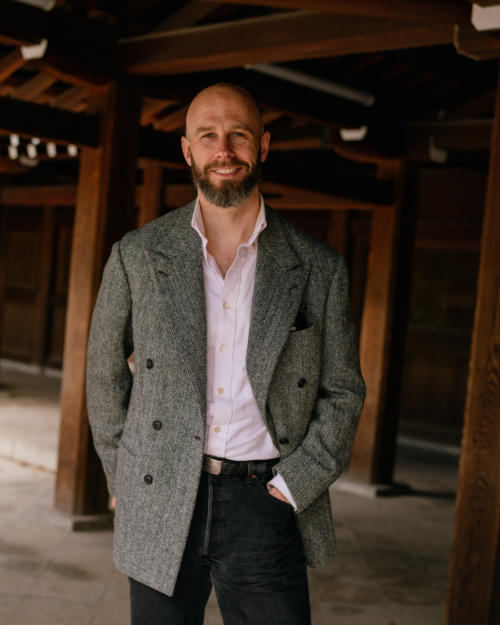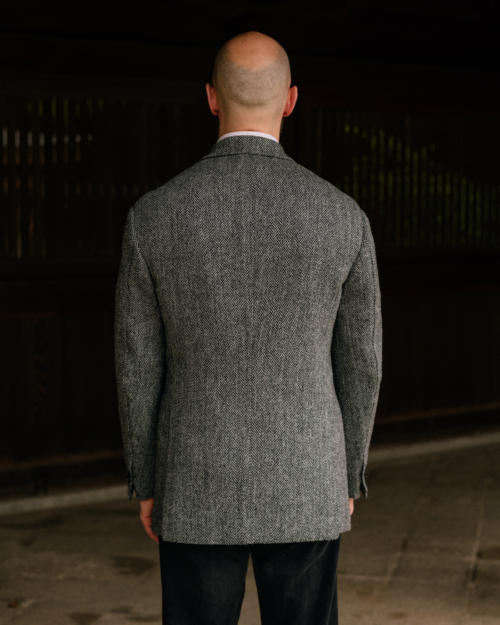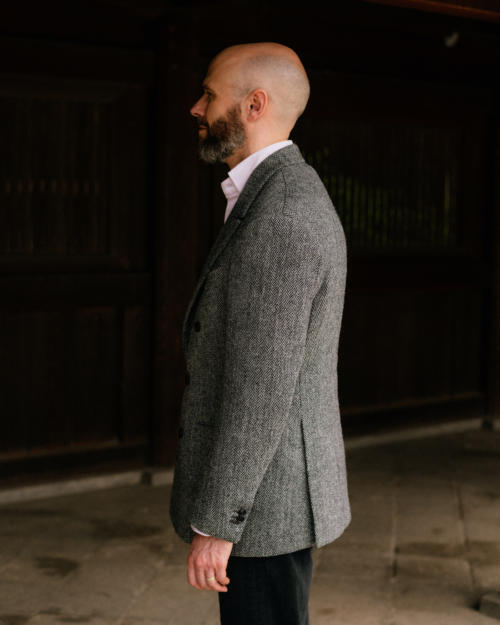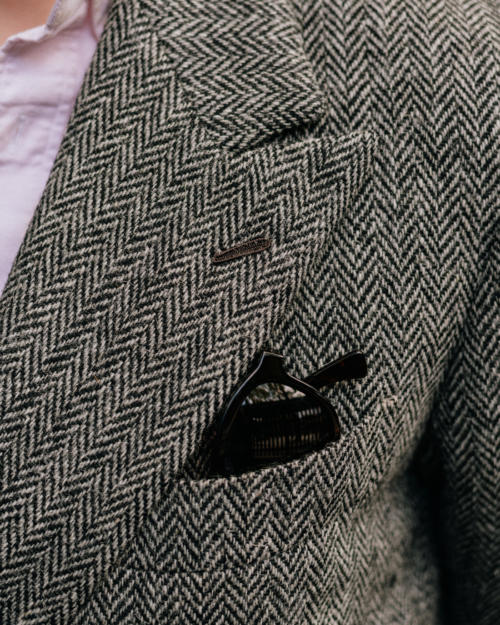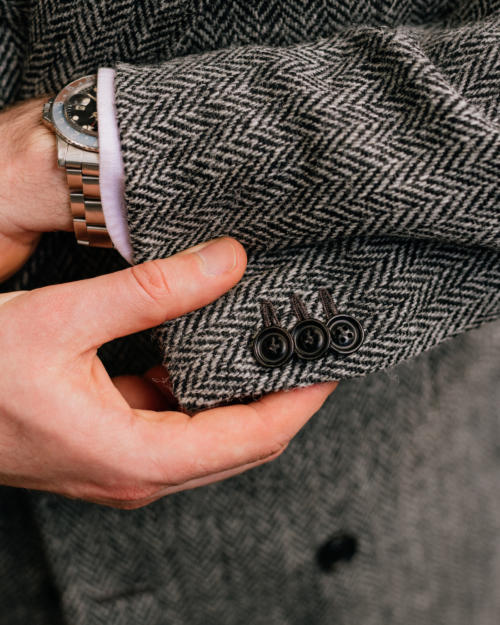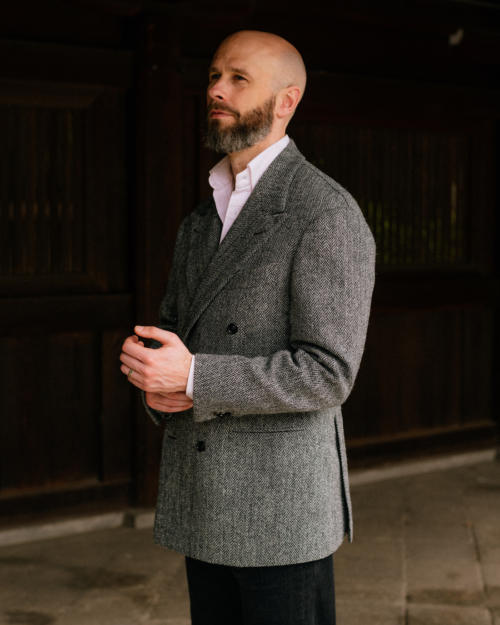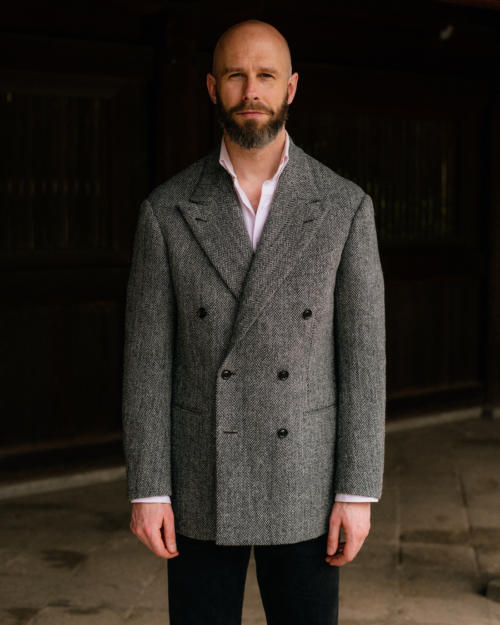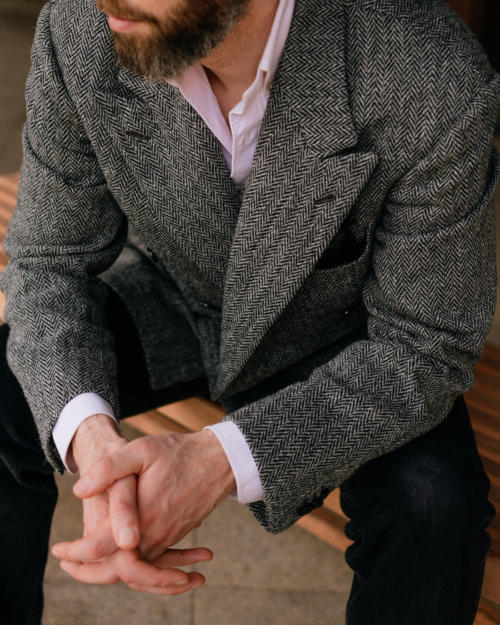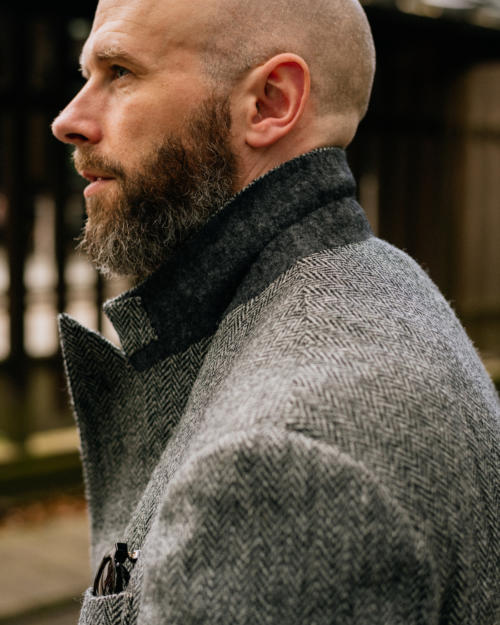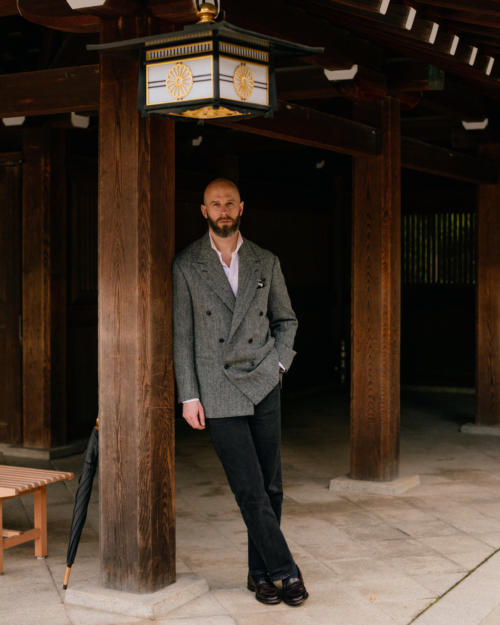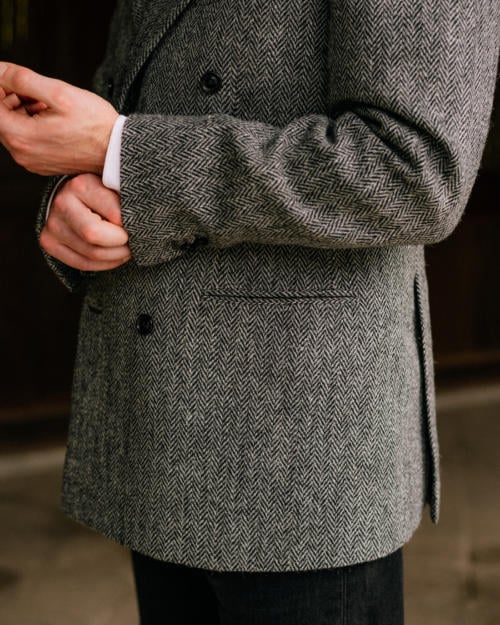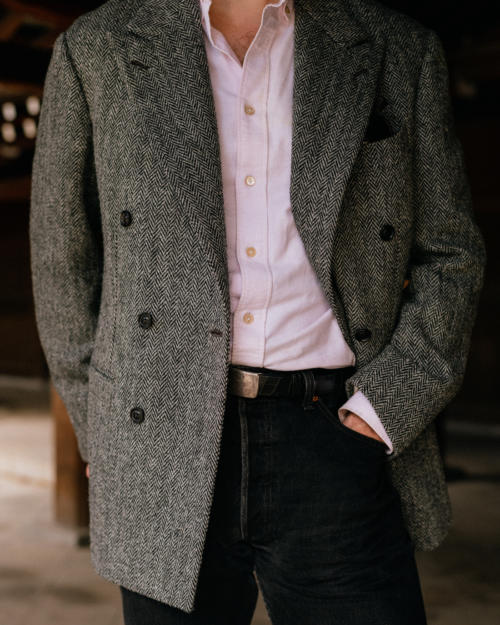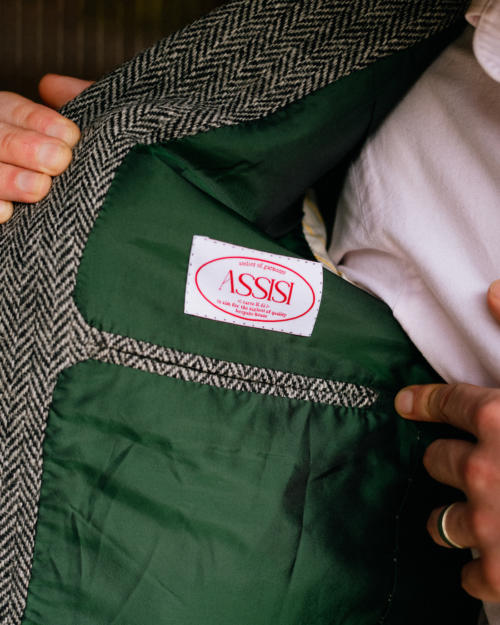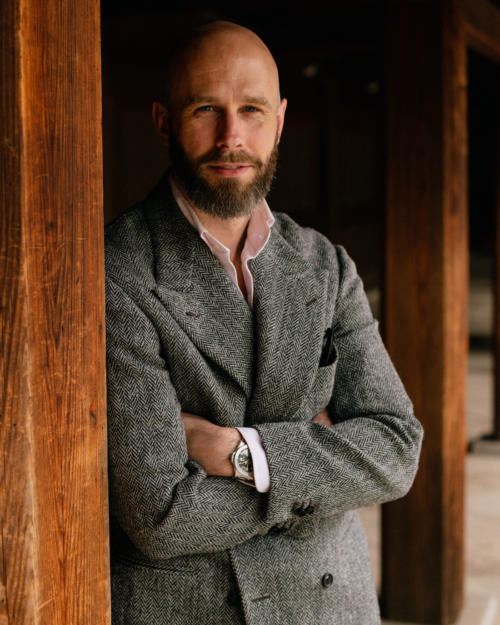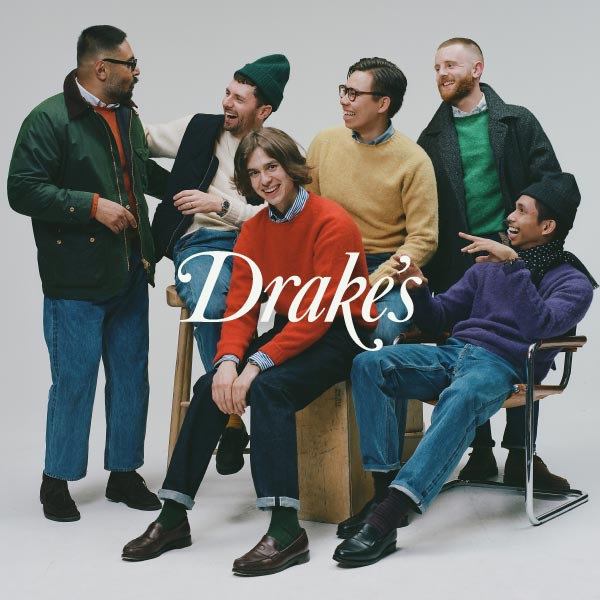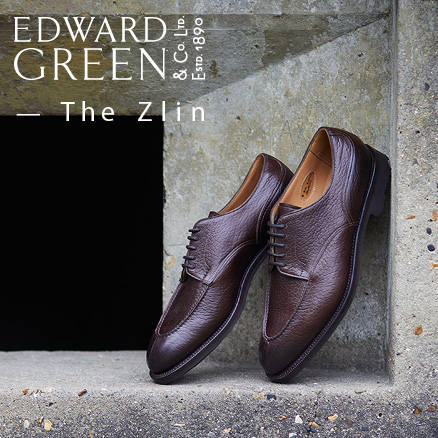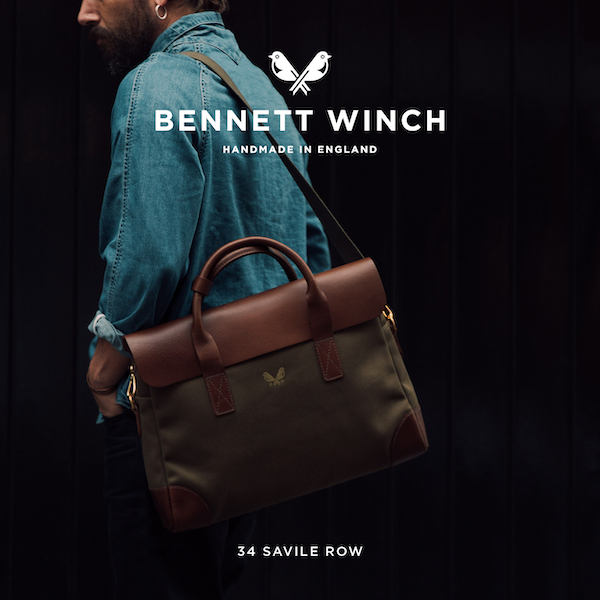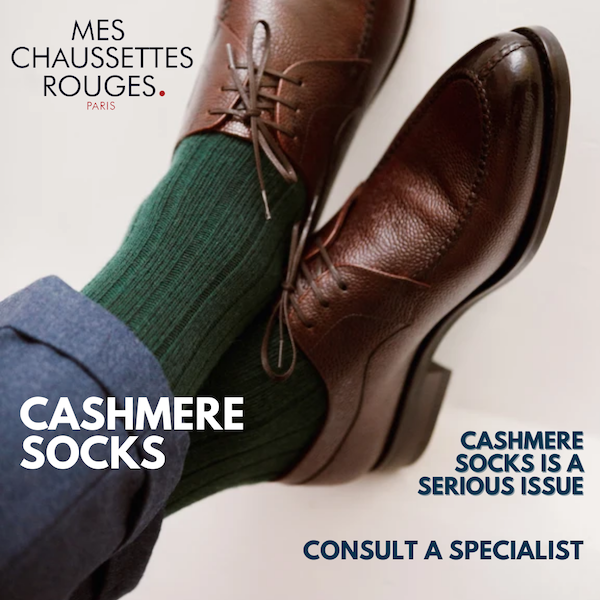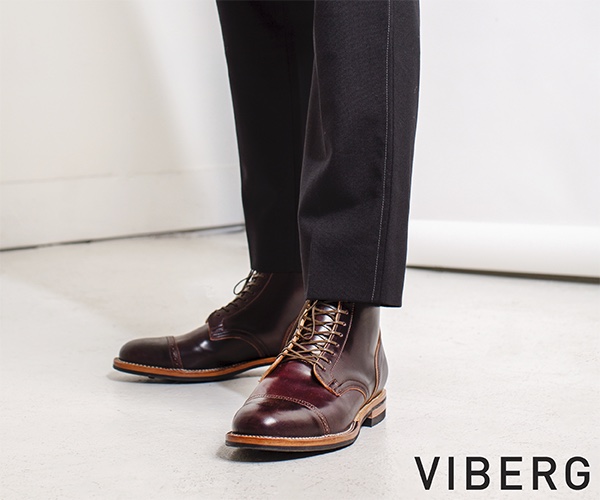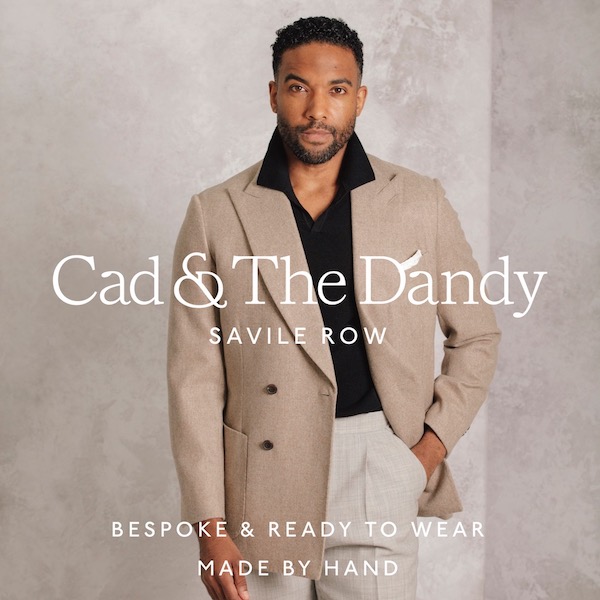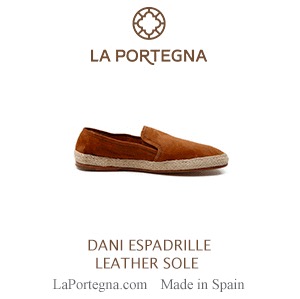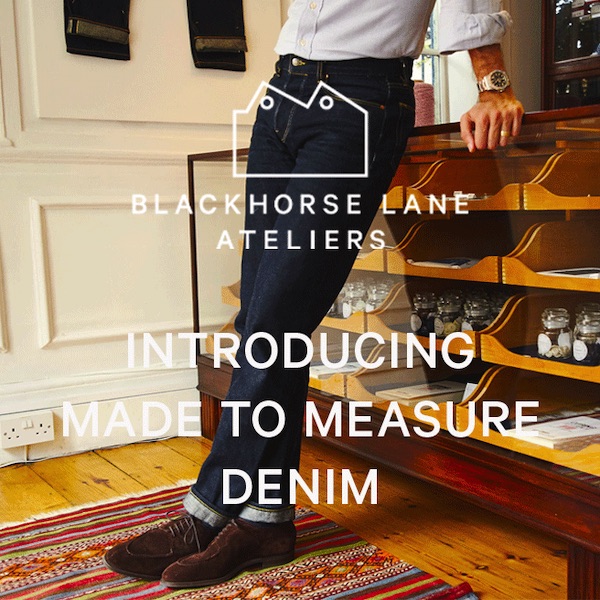Assisi bespoke double-breasted tweed: Review
Readers who saw the first article on Assisi, the Korean tailor that made this tweed double-breasted jacket, were impressed with how the fit was looking, and they weren’t wrong.
It’s a very well cut piece of bespoke, with a three-dimensional shape that really drapes around the body - suggesting the wearer’s shape without ever clinging to it. Another reader (I do love our discerning readers) made the observation that it embodied the sentiment of this Hardy Amies quote:
“Good design and making of clothes must always ‘honour’ cloth; must disturb cloth as little as possible. Undisturbed cloth makes the wearer appear at ease and is pleasing to the eye of the viewer.” Amies’ words capture both what’s lovely about this cut and what - in my view - has been wrong with most tailoring for the past 20 years.
Of course, Assisi had the assistance of a fairly thick material (Harris Tweed) and they favour a looser style, both of which make an undisturbed fit easier. Without taking anything away from them whatsoever, it would be harder in a close-fitted 9oz worsted.
The quality and finishing of the jacket is also good, with neat hand-sewn buttonholes and a top-stitched lining.
You can see from the images of the buttonholes that they could be finer - it’s not the level of handwork you’d get from Savile Row or Milan, nor from Paris and small English houses above that, but it’s still better than some from Naples, for example.
And there are nice touches, like the mirroring of the herringbone pattern around the in-breast pocket; even though that is also a separate piece from the rest of the facing.
It feels pertinent to mention price here. Although Assisi are not and don’t see themselves as a lower level tailor, the houses in Paris or Milan we’re mentioning would be charging more than twice as much: over $6000 rather than $2950 for a suit. And the fit is certainly on a par with them.
The Assisi construction is very light. There is only a single layer of canvas and only a little padding at the end of the shoulder.
This is in common with Assisi’s Neapolitan influences as regards the shoulder, though the Milanese tailors they admire would also do something similar with the body construction. As we outlined in the previous article on Assisi, there are also some Milanese influences in aspects of the design.
With a tweed like this, I can imagine some people finding the jacket too soft. You feel less of the handmade structure, and the bespoke skill comes mostly in the cut and perhaps shaping with the iron.
I like it in a casual jacket - which for me will actually be as much short coat as jacket, in terms of functionality - but I can imagine someone that is used to tailoring outside southern Italy, and who perhaps wants a fairly sharp suit, not liking it.
Design wise, Assisi like a roomy fit, with plenty of that undisturbed cloth we mentioned earlier.
I like the way this looks, it’s both elegant and relaxed, and quite flattering on someone slight like me.
However, it could border on being too big. We took in the body during the second fitting, as it really was too big at that stage. And I can easily fit a sweater underneath without making any difference to the look or comfort.
I wouldn’t change this jacket, as it’s a winter piece that, as I said, will often function as outerwear. But anything for summer, or something smarter, I would ask to have cut a little closer.
The only thing I might have got wrong is the lapels, which I lowered and reduced at the first fitting. The sample jacket I tried from one of the tailors had rather large lapels, and that scared me a little.
The lapels are now noticeably lower and smaller than other DBs I have (though a certain width reduction is inevitable as the peak moves downwards - there is less space for it). I still like them a lot, and I don’t think anyone outside menswear would notice, but if I were starting again I might have them a touch higher, a touch wider.
We’re talking small increments here, and perhaps it’s impossible to get all of these things right when you’ve never seen a finished jacket made to your particular proportions. There’s no point coming in with a set idea of width, for example, when you don’t know how wide the shoulder will be in proportion.
Also, with tailoring it’s important to consider the piece in movement, in use, rather than standing still. Those are the proportions that matter, and the lapels look very natural then.
The construction of the jacket is such that you can fasten it on the bottom row of buttons as well as the middle (image above) - a 6x1 rather than 6x2.
I don’t especially like this look, though, and despite what some people say, using both positions always involves some compromise in the fit, as you have to make the fronts to sit in one place or the other.
Another small point is the buttons, which are polished and higher than I normally like. But I have my own supply from Bernstein & Banleys and can easily replace them. That’s often easier than having the tailor buy them and import them halfway across the world.
And these are all small quibbles. By far the most important things are that I love the style of this jacket jacket and it is fitted very well.
I know from long experience that those are the two things that will decide whether it becomes a favourite in my wardrobe, as this already has after a few outings.
I can answer questions about style separately, in comments or in a separate article, as that’s not really the focus of this post. But just in brief, the jacket is worn with black jeans, a pink oxford shirt, a black alligator belt and Alden colour-8 cordovan loafers.
I like this combination because it is subtle but distinctive, contemporary but with a touch of something eighties, perhaps Richard Gere with his jeans and jackets, open shirts and black denim. In the clothes, you understand, certainly not the face.
Assisi are based in Seoul, Korea. Trunk shows are conducted through The Decorum in Singapore and Bangkok and through The Finery Company in Sydney. They hope to come to the UK and US in 2024.
Bespoke suits start at $2,950 and jackets $2,300. The cloth is Harris Tweed C001L, 480g, from the Stornaway collection by Kenneth Mackenzie.
They also offer an MTO service, with prices $2,360 for a suit and $1,840 for a jacket. Made exactly the same as bespoke, but to a ready-made block, no fitting, just selection of style and cloth. Still commissioned at a trunk show or in Seoul.
Related posts
from Permanent Style https://ift.tt/M8brVUy
via IFTTT
